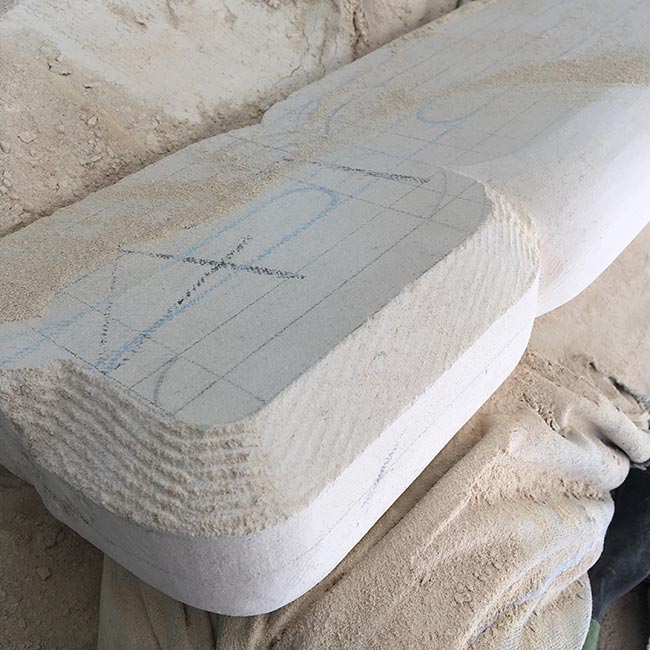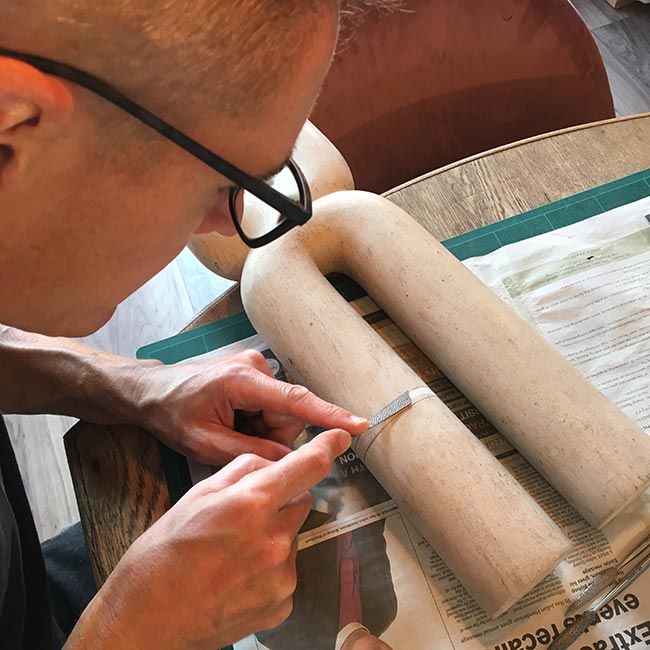The making of 7
My latest sculpture is a very personal piece dealing with genetics, hope and loss.
Named after Chromosome 7, the black band marks the location of the CFTR gene, a mutation of which causes Cystic Fibrosis. Scientists are currently trying to find a delivery method that would allow gene editing and gene therapy to give hope to people with this debilitating condition.
Against all of my hopes it didn’t happen in time for my brother-in-law and friend, Dean.
I know I've previously covered the process I use when carving stone so this may or may not be of interest. In honour of Dean I'll try to keep it brief!
I had a tall block of Portland Stone in my studio that first (much like myself) needed cutting down to size. This involves scoring along each face with a chisel so that in theory, with some strategic blows, the block splits along the lines.
For some unfathomable reason this is a photo of the remaining section, rather than the larger block I was using.
I then repeated this across the length and continued to remove stone until the originally square block reached the required thickness.
It is then marked up to the design which is a stylised representation of a loosely x-shaped chromosome.
A chromosome is a deoxyribonucleic acid (DNA) molecule with part or all of the genetic material (genome) of an organism. Most eukaryotic chromosomes include packaging proteins which, aided by chaperone proteins, bind to and condense the DNA molecule to prevent it from becoming an unmanageable tangle.
Hope that's cleared that up. Not that I just pasted that from Wiki or anything.
It's then a case of removing the edges to the marked depths all around. The aim is to ultimately create cylindrical sections.
Which takes a while.
Then the gaps are carved to form the 'arms' of the chromosome. This is a bit tense as I'm creating potential weak points that could, if any faults lie hidden in the stone, or if my technique is rubbish, split the piece completely.
In order to achieve a flat surface on the inside of these arms I used an English Drag. This is a toothed, steel blade, which as the name suggests, is dragged along the stone (much like using a plane on wood) and is nothing to do with me flamboyantly wearing women's clothes. The fact that I was is purely coincidental. It just helps the air circulate.
Then I repeat the process of shaping the cylinder on the inside sections.
The whole piece is refined with chisels, then rasps (the file shown here) and finally the arduous task of sanding through various grits of sanding blocks until a smooth finish is reached.
I slightly recessed the position that marks the location of the CFTR gene (I chose to only show it one one arm but in reality it is in the same position on both lower arms). This was then painted black, suggesting the black arm band worn in commemoration. Finally the whole piece was wax polished.
For the base I was inspired by an 18th century Japanese technique for preserving wood, known as shou sugi ban. The surface of the wood is charred and then coated in a natural oil. Besides the fact that I love the striking visual look of this technique, it was used here to represent my own hopes being destroyed. However, I also wanted to imply that this charring actually preserves, that the hope for other sufferers of this awful disease endures.
The truth is, I'm not a geneticist or a doctor. I have no real idea whether this technology could have helped Dean personally but the fact is, it gave me hope and hope is everything. I really hope a solution can be found very soon.
Thanks for reading.











